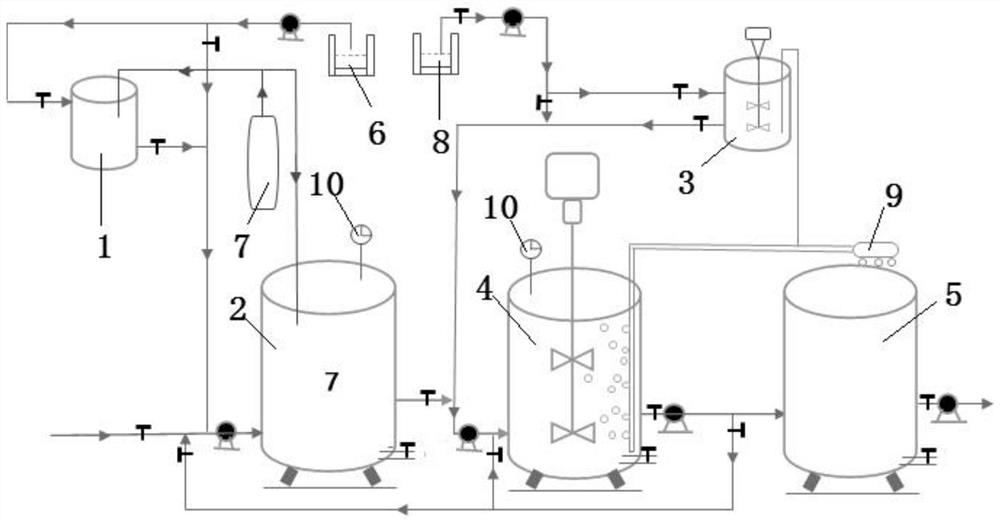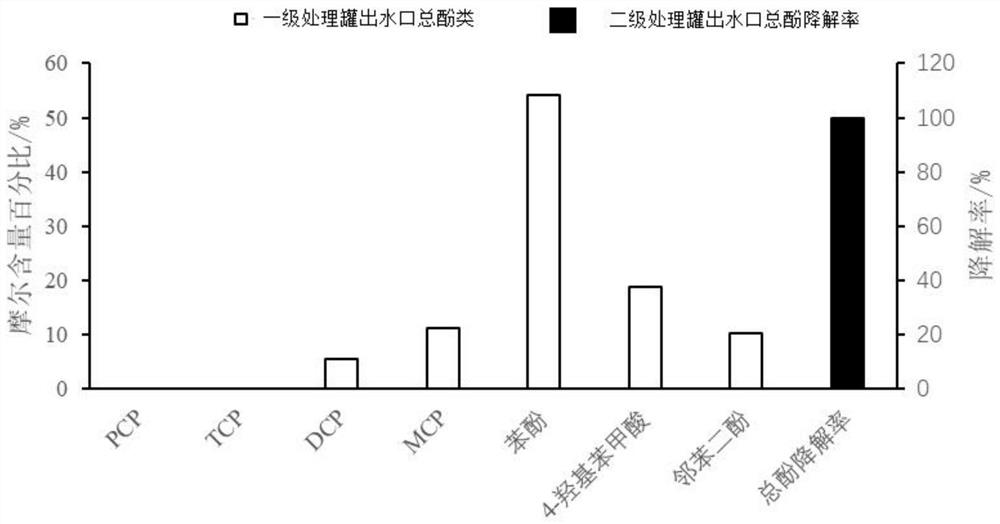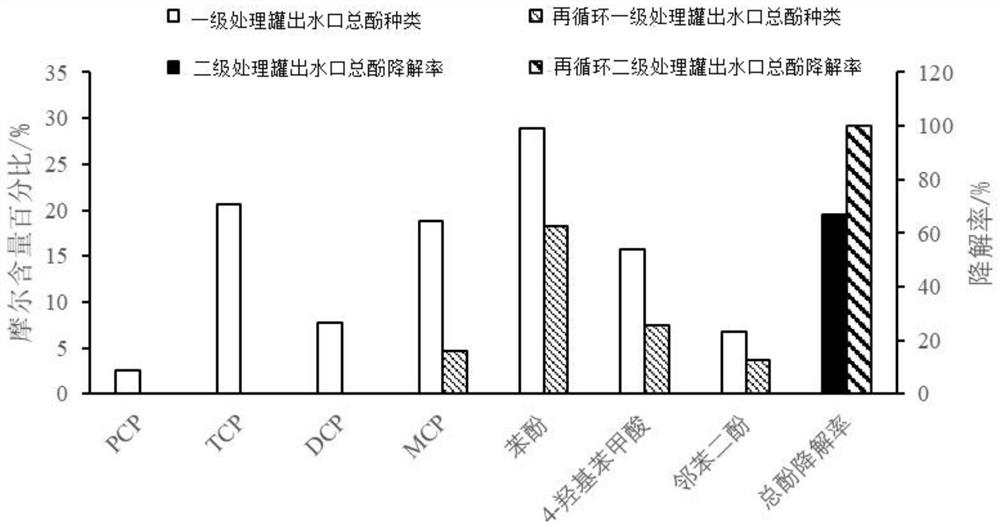Biological agent, degradation agent and system for deep degradation of polychlorinated phenol and application of biological agent, degradation agent and system
A technology for polychlorinated phenols and biological agents, which is applied in the field of polychlorinated phenol biodegradation, can solve the problems of loss of activity, gradual degradation of polychlorinated phenols, and secondary hazards, and achieves the effect of increasing tolerance.
- Summary
- Abstract
- Description
- Claims
- Application Information
AI Technical Summary
Problems solved by technology
Method used
Image
Examples
Embodiment 1
[0030] A system for the advanced degradation of polychlorinated phenols, see figure 1 , including: an anaerobic degradation device and an aerobic degradation device, the anaerobic degradation device is communicated with the aerobic degradation device; the anaerobic degradation device is equipped with anaerobic domestication liquid, reducing dechlorination biological agent and trichlorophenol; The aerobic degradation device is equipped with an aerobic acclimation liquid, a biodegrading agent and phenol; the anaerobic degradation device includes: an anaerobic acclimation tank 1 and a primary treatment tank 2; the aerobic degradation device includes: an aerobic acclimation tank 3, Secondary treatment tank 4 and tertiary standstill tank 5; wherein, the two inlets of anaerobic acclimation tank 1 are communicated with anaerobic acclimation liquid pool 6 and nitrogen tank 7 respectively, and the outlet is communicated with the inlet of primary treatment tank 2; The inlet of the oxyge...
Embodiment 2
[0036] A biological agent for the deep degradation of polychlorinated phenols, comprising: a reductive dechlorination biological agent and a degrading biological agent; wherein, the reductive dechlorination biological agent comprises, in parts by weight: 1 part of Pseudomonas putida, 1 part of Velez spore 1 part of bacillus, 1 part of activated sludge and 0.01 part of liquid laccase; the biodegrading agent includes, in parts by weight: 1 part of Burkholderia cepacia, 1 part of Candida utilis, 1 part of activated sludge and Liquid Laccase 0.01 part.
[0037] Among them, Pseudomonas putida was purchased from the China General Microorganism Culture Collection and Management Center with the number of CGMCC1.8829, which can be reductively dechlorinated under anaerobic conditions;
[0038] Bacillus velesi is a self-sieving bacteria capable of producing dechlorinating enzymes to dechlorinate polychlorinated phenols. It was deposited in the China Center for Type Culture Collection on...
Embodiment 3
[0041] A degradation agent for deep degradation of polychlorinated phenols, comprising: anaerobic degradation agent and aerobic degradation agent; wherein, the anaerobic degradation agent comprises: anaerobic domestication liquid, reductive dechlorination biological agent and reductive dechlorination inducer ; Aerobic degradation agents include: aerobic acclimation solution, biodegradation agent and ring-opening inducer; anaerobic acclimation solution includes: sucrose 2g / L, sodium lactate 0.6g / L, yeast powder 1g / L, ammonium chloride 0.5g / L L, sodium thiosulfate 1g / L, potassium dihydrogen phosphate 2g / L, magnesium chloride 0.2g / L, calcium chloride 0.02g / L, sodium chloride 0.005g / L, ferric chloride 0.002g / L, chlorine Manganese 0.0005g / L, Cupric Chloride 0.002g / L, Sodium Selenite 0.001g / L, Sodium Molybdate 0.001g / L, Cysteine 0.5g / L, Vitamin B 1 0.001g / L, vitamin B 2 0.001g / L, vitamin B 6 0.002g / L, vitamin B 9 0.00005g / L, vitamin B 12 0.0000025g / L, p-aminobenzoic acid 0.001...
PUM
 Login to View More
Login to View More Abstract
Description
Claims
Application Information
 Login to View More
Login to View More - R&D
- Intellectual Property
- Life Sciences
- Materials
- Tech Scout
- Unparalleled Data Quality
- Higher Quality Content
- 60% Fewer Hallucinations
Browse by: Latest US Patents, China's latest patents, Technical Efficacy Thesaurus, Application Domain, Technology Topic, Popular Technical Reports.
© 2025 PatSnap. All rights reserved.Legal|Privacy policy|Modern Slavery Act Transparency Statement|Sitemap|About US| Contact US: help@patsnap.com



